Estadio de la Ceramica: Villarreal
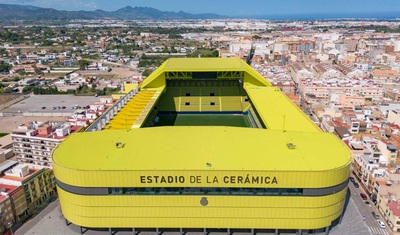
From Villarreal
Estadio El Madrigal (renamed Estadio de la Ceramica in 2017, in homage to the local industry) has been the home of Villarreal since the club was formed in 1923. In fact, the ground was built specifically to accommodate the new team for the Valencia area of Spain. Their local rivals, Castellón, played the first game in the stadium on the 17th of June 1923 when they went up against a team named after Miguel de Cervantes, a man widely considered to be Spain’s finest author who penned Don Quixote amongst other works.
The club is nicknamed El Submarino Amarillo, or The Yellow Submarine, because of their all yellow kit and their mascot is a characterised submarine with human characteristics named Groguet. That wasn’t enough for the club, however, who really drilled the point home by building a statue of a yellow submarine outside the stadium. They ground’s capacity is just under 25,000, which is about half the population of the city of Vila-real in which it stands.
Stats
| Estadio de la Ceramica Stats | |
|---|---|
| Year Opened | 1923 |
| Capacity | 23008 |
| Average Attendance | 17862 |
| Record Attendance | 24450 (Villarreal v Barcelona (2016)) |
| Pitch Size | 105 x 68 (7140) |
| Nickname | Feudo Amarillo |
| Former Name | Campo del Villarreal, Estadio El Madrigal |
| Owner | Villarreal CF |
| Clubs Hosted | Villarreal CF |
| First Fixture | Castellon v Cervantes (17/06/1923) |
| Villarreal CF Stats | |
|---|---|
| Year Founded | 1923 |
| Nickname | El Submarino Amarillo (The Yellow Submarine) |
| Club Mascot | Groguet (an antropomorphic submarine) |
| Rivals | Castellón, Valencia |
| Kit | Yellow (Home) / Dark Blue (Away) / Teal with Red Stain (Third) |
| Training Ground | Ciudad Deportiva Villarreal CF |
| Shirt Sponsor | Pamesa Cerámica |
| Team Owner | Fernando Roig |
| Record Goalscorer | Gerard Moreno (279) |
| Record Appearances | Manu Trigueros (477) |
Estadio de la Ceramica Photos
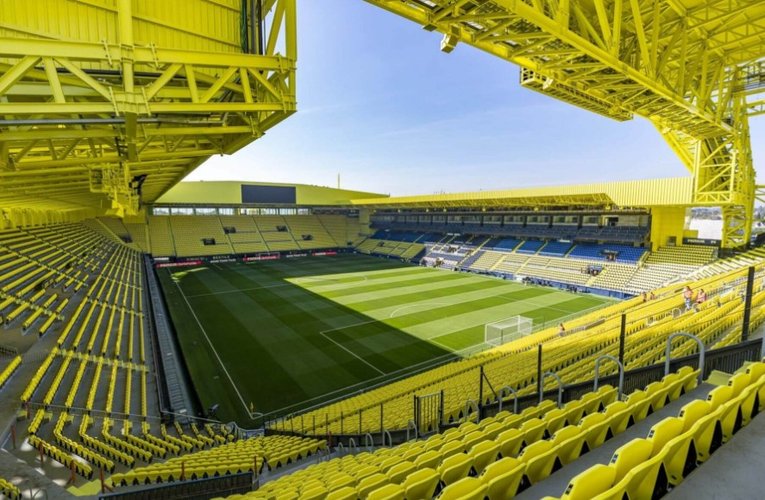
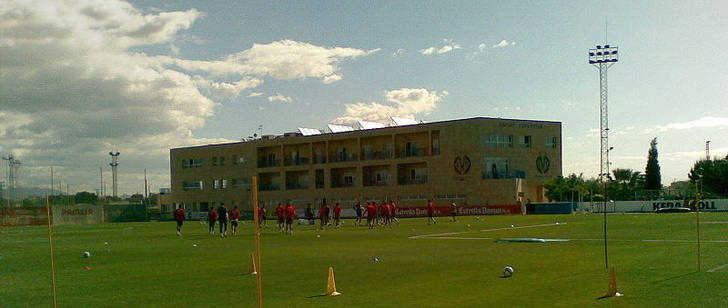
By Adri 22 (Own work) [Public domain]
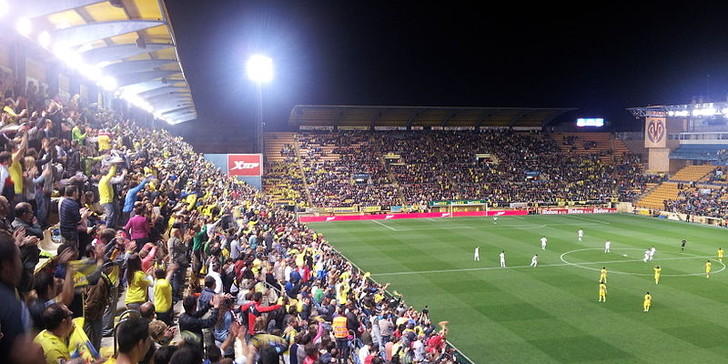
By Millars (Own work) [CC BY-SA 3.0]
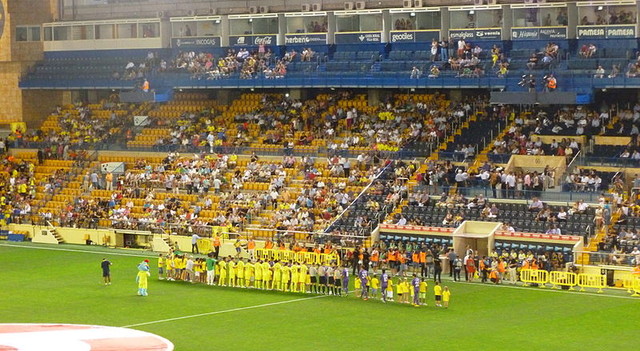
By Millars (Own work) [CC BY-SA 3.0]
Estadio de la Ceramica Seating Plan and Where to Sit
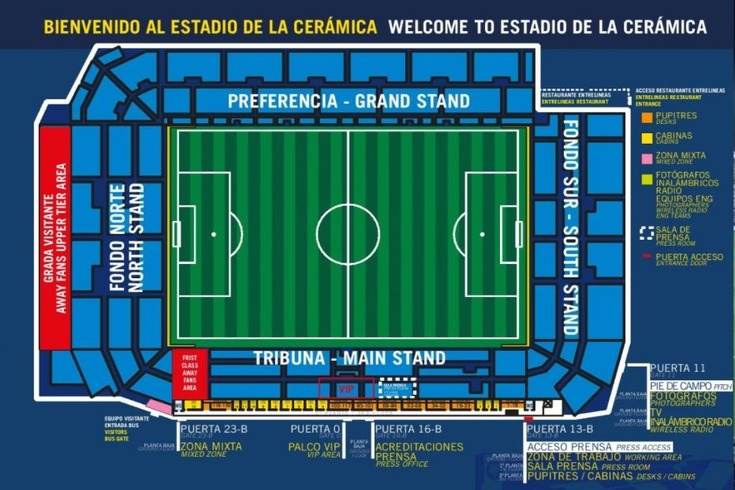
Unlike the majority of European stadiums, perhaps because of its age, Estadio El Madrigal isn’t built in the ‘Bowl Style’ that is becoming more and more common. Instead it has more of an ‘English Style’, whereby each section of the ground is a standalone section that runs along the edge of the pitch. Here’s a bit of information about each stand:
- Fondo Norte – Located, as the name suggests, at the North end of the stadium and behind one of the goals is this tall stand that runs over two tiers. This is the stand that tends to house the away supporters.
- Preferncia – Found to the East of the ground, this stand is technically two-tiered owing to the small paddock like section at the bottom. The majority of it is heavily steeped in one section, however.
- Fondo Sur Cubierto – Directly opposite The North Stand and behind the other goal is this single-tiered stand that is split into two different sections. This is where the club’s most vocal fans tend to congregate.
- Tribuna – The West Stand, as it would be known in the UK, is the main stand in the ground. It houses the players’ tunnel, the dugouts and the club’s air-conditioned executive boxes.
Villarreal CF Ticket Prices
As is often the case with matches in foreign countries, it isn’t easy to understand how ticketing works for Villarreal games. Unlike in England, where prices tend to be rigidly set-out before the season begins, ticket prices for games in Spain tend to be announced about four weeks prior to the match, meaning prices can fluctuate. There’s also no specific information about whether they charge different prices for children or concessions, either.
What we do know is that the club charge different amounts of money depending on where in the ground you want to sit. For most games, the prices can be expected to be somewhere in the range of:
- €60 – €200
How To Get Villarreal CF Tickets
The club’s website is one of the first places to look if you want tickets, with an excellent interactive seating plan that lets you pick out the seats that you want. You can also email the club’s ticket office, call them directly or purchase tickets from the ground or the club shop. Plenty of Spanish clubs, Villarreal included, have a fun system whereby you can buy tickets from cash machines throughout the city. In this case you’ll want to keep your eye out for Bankia ATM machines if you want to buy your tickets this way.
Where to Buy
Getting To Estadio de la Ceramica
Vila-real is right on the East coast of Spain, promising a short trip to the beach or even to nearby Valencia. Getting there from the UK is easy enough, with both Ibiza and Palma a short distance away by boat. Here are some of the more typical options you might want to consider, however:
Train – Getting a train from London to Vila-real will take about 22 hours, so you might want to consider a more conventional method of travel if you don’t want to have muscle wastage by the time you’ve arrived. If you’re in Valencia, however, a train to the city will take about an hour, though they don’t run all that frequently. Once you’ve arrived at Vila-real Railway Station you’re little more than a ten minute walk from the ground.
Bus – There isn’t a huge amount of information available about the buses in Vila-real, to be honest, though it’s such a small town it won’t be your first thought anyway. There are buses run by numerous companies, such as Grupo HIFE, from Valencia to the city so you might want to consider those if you’ve flown into Valencia’s airport.
Car – The explosion of sat-nav devices nowadays mean that you’ll get better instructions from them than we could ever offer. Your best bet, then, is to put in the address (Calle Blasco Ibáñez 2, 12540 Vila-real) and let the device do the work for you.
By Air – The closest airport to the city is Valencia’s Manises Airport, just under 60 miles away. From there you can get a train to Valencia in order to get another one out to Vila-real, which will take just under half an hour, or a bus that will take about three-quarters of an hour.
Taxi – A taxi from Valencia’s airport to the stadium will cost you somewhere in the region of €80 and take about an hour to complete its journey.
Parking Near Estadio de la Ceramica
There isn’t much parking at the ground itself, but as the ground is located in a residential area you’ll find plenty of on-street parking available. Just make sure you keep your eye out for any parking restrictions that might be in place or you could be in for a nasty surprise when you get back to your car.
Useful Resources
Estadio de la Ceramica Hotels
The East coast of Spain is full of beautiful villages and wonderful places to spend a few days, with Vila-real being no exception to this. Obviously nearby Valencia offers the better known location for your stay, but we’d recommend you look closer to the ground, too. Here are our favourite hotels for your consideration:
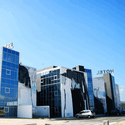
Hotel Sercotel Plana Parc - £35+
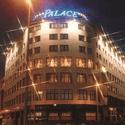
Vila-real Palace Hotel - £50+
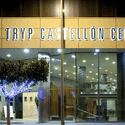
Tryp Castellón Center - £60+
Pubs and Bars Near Estadio de la Ceramica
Pretty much anywhere in Spain is great for bars and nice little eateries that you weren’t expecting. There are a number of wonderful locations in Vila-real for a pre-match pint or spot of tapas, with these being some of our favourites:
Bocateria Els Lluïsos
Bar Bocateria El Estadi
La Tribuna
Facilities
From the horchata tent outside the front of the stadium selling ‘typically Valencian’ food through to the stalls on the concourses inside the ground, you won’t be disappointed by your visit to Estadio El Madrigal. It’s got all of the facilities you’d expect for a stadium in one of Europe’s top-flight leagues and promises an excellent experience from start to finish. It went through a huge upgrade which finished in 2023, so the place looks stunning.
Hospitality
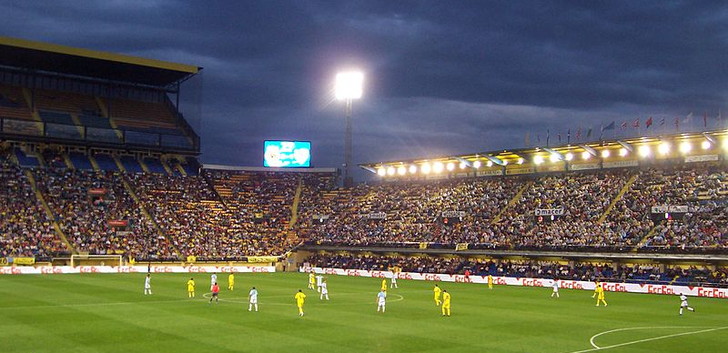
Much like with the ticketing procedures, it isn’t always easy to understand the hospitality options in foreign stadiums. Estadio El Madrigal has 30 air-conditioned boxes with stunning views of the pitch, though, so it’s safe to say they have a number of excellent hospitality packages available for people hoping to watch Villarreal play in style. There are also a number of lounges and even a restaurant in the ground, so if for some reason a box doesn’t tickle your fancy there will still be a package that suites what you’re after.
Private Hire
Entrelíneas restaurant is located in the corner of the ground and is tastefully decorated with old photos of the club and a classic vibe. It’s one of the most beautiful parts of the ground and is available for private hire for any number of purposes. Business dinners and presentations have all been held there in the past, as have communions, Christenings and even tasting sessions for new product launches! Sufficed to say if you’re looking for somewhere to host an event in the Vila-real region then the home of the city’s football team has got you covered.
Stadium Tours & Museum
Estadio El Madrigal is located near to the Sports City Complex, an area that includes the club’s training complex and administrative offices. You can do a tour that not only takes in one of La Liga’s oldest grounds but also sees these usually off-limits locations. In the ground itself you’ll get to see such areas as the changing rooms, the players’ tunnel and the dugouts as well as the VIP sections of the stadium.
It’s €15 for adults and €12 for concessions.
About Villarreal CF
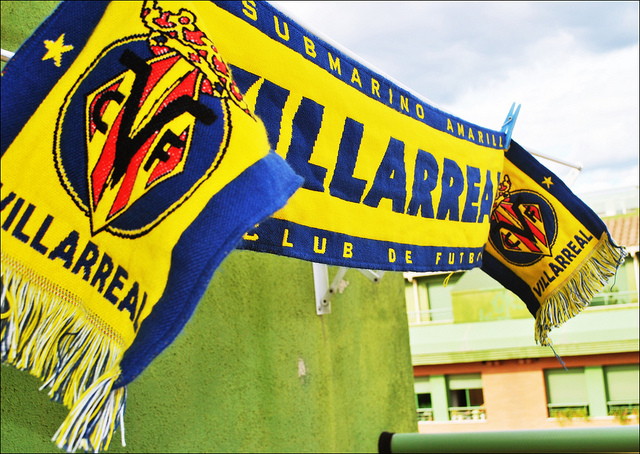
Villarreal Club de Fútbol, S.A.D. is better known to most as merely Villarreal CF, or even just Villarreal if you can’t be bothered with the second bit. The club was formed on the 10th of March in 1923 with the aim of promoting all sports but ‘especially soccer’. The club played at the newly built Estadio El Madrigal and initially they charged men half a peseta to watch matches whilst children had to pay a quarter of a peseta and women got in for free. Despite the club being known as The Yellow Submarine nowadays because of their all yellow kit, they originally played in white shirts and black shorts.
The club gained promotion to the country’s Primera Liga for the first time in 1998, having spent the previous 75 years of their existence in Spain’s lower leagues. They were immediately relegated back to the Segunda Division, but returned in 2000. Their highest league finish was second in 2008 when they missed out on the title by 8 points to the all-conquering Real Madrid side of the time. They have won the UEFA Intertoto Cup twice, once in 2003 and the second time the following year. They have been UEFA Champions League semi-finalists once, in 2006, and won the Europa League in the 2020/21 season.
Estadio de la Ceramica History
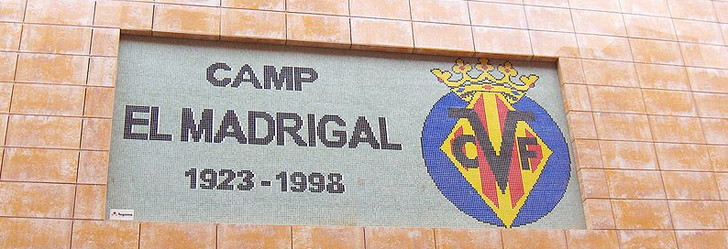
Built in 1923, Estadio El Madrigal remained virtually unchanged for nearly fifty years until remodelling of the ground took place before the start of the 1952-1953 season. They changed the size of the pitch from 95m x 65m to 105m x 65m, matching the pitch size at the Helsinki Olympic Stadium, as was the style of the time. Some small alterations were made again in the 1960s when a small covered stand was built, with The South Stand finished at the start of there 1970s. That was then demolished and rebuilt at the end of the 1980s.
The biggest changes to the ground took place in the 1990s, however, when numerous works were done to it in order to make it in to modern stadium we know today. The South Stand was demolished and rebuilt once more, with a roof added as well as VIP section and an amphitheatre. The VIP section is one of the jewels of the stadium, with thirty boxes that offer air-conditioning, TVs to show the game and catering services. The stadium’s most recent renovations came about in 2005 when a number of small changes had to be made in order for the ground to be a suitable venue to host Champions League football, according to UEFA’s stringent rules.
Future Developments
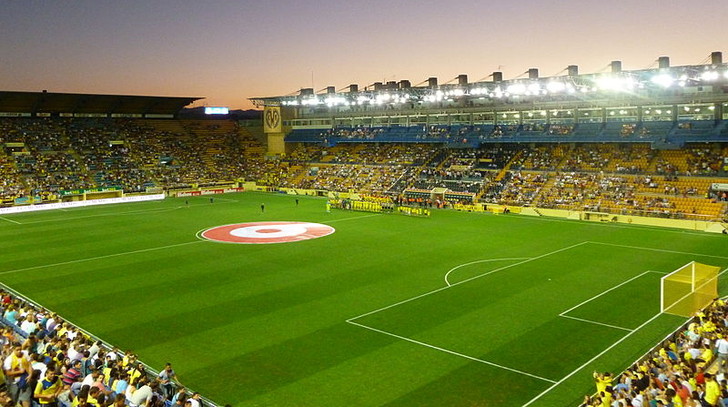
There are no immediate plans to update or renovate any parts of Estadio El Madrigal, but if this changes then we’ll let you know as soon as we know. It had a big makeover between 2022-2023.
